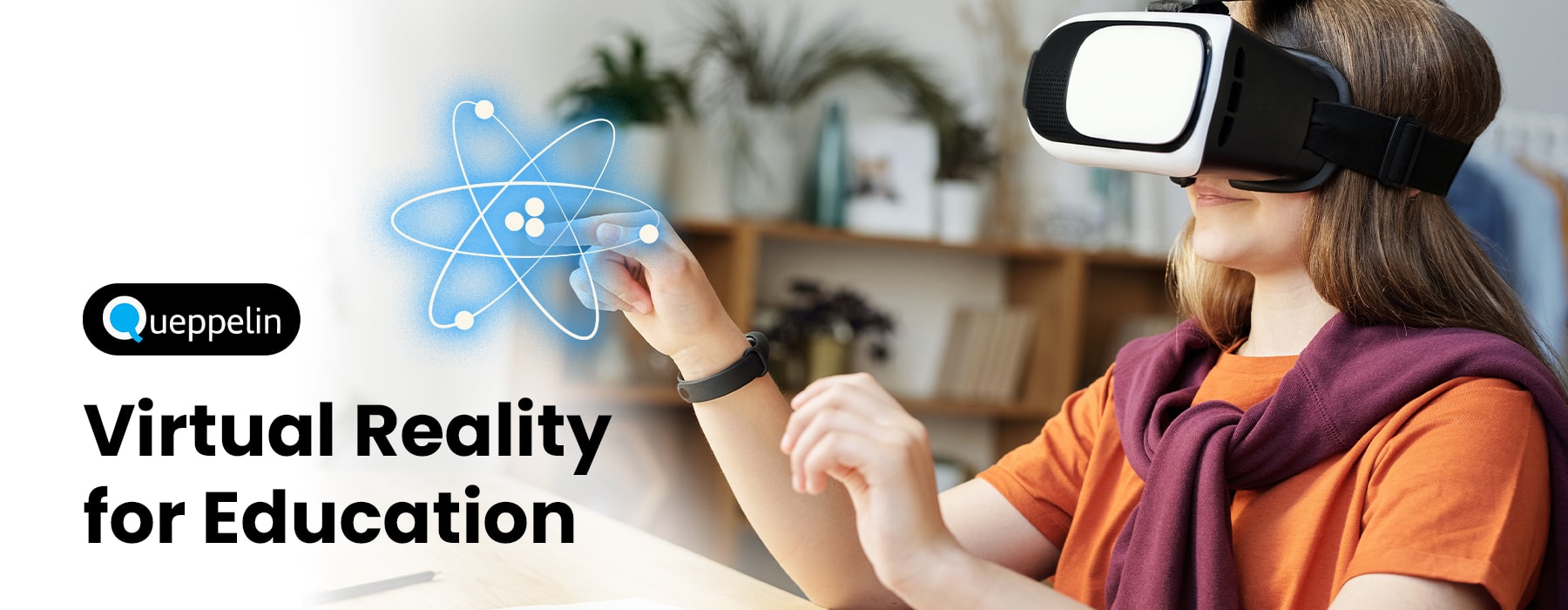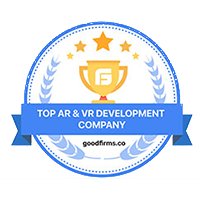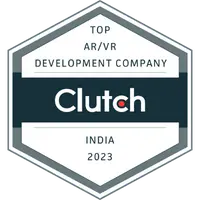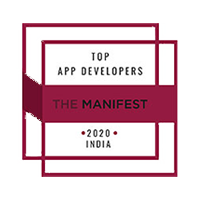“The only source of knowledge is experience”. - Albert Einstein
When we experience something, we are involved in it to the highest level possible. Our attention is high and wide while we put as many senses to use as possible. This is what makes the best learning. It leads to a deeper understanding of the concept that stays in our memory more permanently than any other method of learning.
Unfortunately, the existing way of learning performs miserably when it comes to experiential learning. It fails to involve learners in the learning process and produces outcomes that fail to match the expectations and needs of the individual as well as the society as a whole.
Now, the question comes, how do we do it? How can we involve students in the process? How can we offer experiences for different kinds of learning? It’s not physically and financially possible. After all, we cannot take kids to a mining area and put them in danger just because they want to learn the meaning of the word ‘mining’ or want to see what a spade looks like.
But hold your thought right there. What if I tell you we can?
Fortunately, like always, technology has the solution, and this time it’s in the form of Virtual Reality. Virtual Reality or VR helps educator offers experiential learning to learners and fills the gap that our century-old education is marred with.
In this blog, we will learn how Virtual Reality or VR is the best tool to impart learning and how it creates the best learning environment for a hands-on experience that motivates students to learn. Let’s start.
Virtual Reality and its connection with Education
VR or Virtual Reality is an immersive technology i.e. a technology that engrosses its users from all sides creating a different reality.
It puts the user into a computer-generated reality setting surrounded by interactive digital objects. These objects make up an interactive digital environment that learners can use to learn.
Also, there is an added advantage with VR, unlike the real world, we can choose the way our environment behaves.
So, while we can create an artificial reality on par with the physical world reality, with VR we have the power and potential to go way beyond that and create an environment that defies physics altogether. And a good education needs both kinds of these environments.
Coming back to the immersive component of VR, its immersiveness quality is what connects VR to education.
VR creates an experience for the user and, in our case, where they learn by actively doing and not just passively listening, watching, or reading. This is what experiential learning is and this is what education needs.
This way, VR make learning more productive as the user is involved in the process and feels that they are a part of it. We have discussed the various benefits of VR to the educational process in the next section. Let’s move to that.
VR has exactly what education needs: Interaction, Involvement, and Visualization
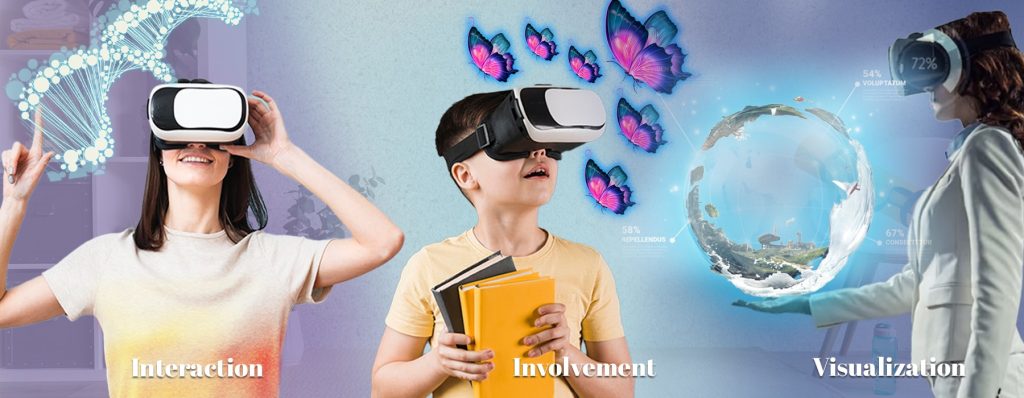
The expanse of Virtual Reality in education is growing dramatically over the years. In 2018, VR in education stood at $656 million and it is projected to reach $13,098 million by 2026, a compound annual growth of around 43% for this period. (Fortune Business Insights)
This shows the power of VR in education and how more and more educators are adopting the affordable, effective, and remote-friendly way of imparting education. And why not, VR brings some rare qualities to education that it really needs: interactivity, involvement, and visual representation.
Interactivity
VR makes the learning process bidirectional wherein the learner interacts with the objects and concepts. They can touch the digital object, move them, alter their shape and much more depending upon the requirement of the experience.
This way, VR lets the learner interact with the concept so that they can explore it on their own. Thereby, giving them control over the process.
This freehand stimulates creativity in the learner as they can approach the concept in the way they want and in a way that is easy for them.
This not only instigates more interest in the learning but also stimulates creativity in the learner. For them, the VR experience is their oyster now and they can learn in any way they like.
This whole process develops thinking and curiosity in the learner and this is what makes them intelligent.
Compare it to the traditional way of imparting education which was unidirectional in nature. The learners are just told about the subject in a more or less monotonous fashion. No wonder why Seven out of ten teens in the U.S. have named anxiety or depression as a major problem among their peers and 75% of U.S. high school students expressed boredom, anger, sadness, fear, or stress while in school (Wallace, 2019)
Involvement
Another aspect that VR improves is the level of the learner’s involvement in the process. VR puts learners in a situation where they have to do something if they want to learn.
In such a scheme of things, learning is the sought-after outcome and not the hurdle to their final actions. This is how humans are designed to learn anything new i.e. learning by doing and not by learning in the thin air with little to no idea of its practical applications.
So, if a person wants to learn about volcanos, they can visit a volcanic site in virtual reality, walk around it to explore it from different locations, and see how different natural forces contribute to its formation.
They can check out a timeline of the volcano, see how the formation starts, the path it takes, and how it ends in the future. They can also dissect the learning about each of its layer, their material composition, magma, lava, rock formation, and whatnot. The possibilities are literally unlimited with VR learning.
All of this involves the learner in a much higher degree than compared to traditional methods. Therefore, they understand much better and faster and, more importantly, they retain more than the traditional learning methods.
In the traditional methods of learning, the straightforward and non-involving approach often leads to the learner getting drifting away from the topic paying lesser attention than required.
That is why VR produces better outcomes than traditional teaching methodologies at any given point in time.
Visualization
The third quality is that VR is capable of offering visual representation. Humans, like all other primates, rely heavily on visual cues to understand the world around them. From basic adaptive behaviors like finding food and shelter to complex ones like parental care and social hierarchies, we use our eyes to learn and assess the situation.
Using VR, educators can visually represent even the most complex of concepts. They don’t need to leave the onus of visualization to the student’s imagination which might differ from the actual concept being taught.
That’s how VR makes the process easy for both the educator as well as the learner.
Consider this, the formula of the surface area is much easier to understand when the cylindrical model unwraps the surface to show how the formula has been actually derived.
All the qualities – interaction, involvement, and visualization, make VR the best learning tool for education. The learners engage with the learning process for longer sessions interacting with the concepts with eye-catching visuals that get stuck in their minds and make it easy for them to understand and retain.
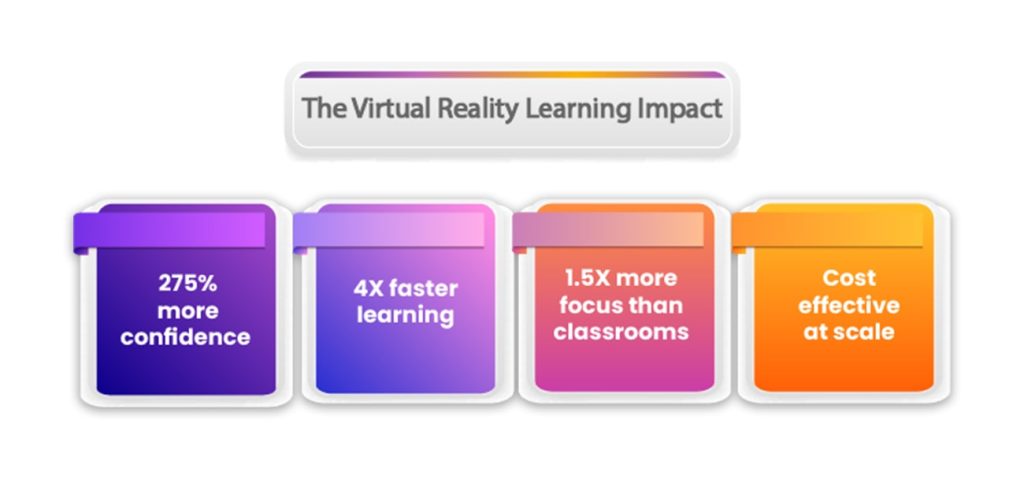
As a result, the outcomes are multiple times higher than the traditional methods of learning. This is what PwC also found in its research.
More Confidence: VR Learners were up to 275% more confident to act on what they learned. This was 40% higher than the classroom learners.
Faster Learning: VR learners completed training 4 times faster than classroom training and they felt 3.75 times more emotionally connected to the content than classroom learners.
Higher Attention: During the VR session, learners were 4 times more focused during training than their e-learning peers and 1.5 times more than their classroom colleagues.
Cost Effective: The study also found that VR training is more cost-effective at scale than classroom or e-learning. At 375 learners, VR training achieved cost parity with classroom learning, and at 1950 learners, VR training achieved cost parity with e-learn. However, on 3,000 learners, VR training became 52% more cost-effective than classroom learning.
How to implement VR applications?
Knowing that VR offers so many advantages for education, the obvious question that would come to you next is how can I implement VR for my educational institution.
To answer the question first, you need to understand that VR is perfectly suitable for all kinds of learning be it hard skills, soft skills, mathematical and scientific concepts, event reconstruction, or event sports skills.
Next, here are some examples to give an idea of how to implement VR for different fields of learning.
Scenario Training for Soft Skills
Learners can be put into a scenario wherein they have to interact with virtual people using their soft skills. This way VR helps in training in highly essential soft skills such as conflict resolution, critical thinking, logical reasoning, problem-solving, interpersonal communication, etc.
The learners can practice these skills with virtual people to save time and cost and attain better leads to a better outcome.
The PwC study we discussed above found that VR learners were 2.75 times more confident about applying soft skills than classroom learners.
Events Reconstruction to Improve Analytical Skills
Event Reconstruction is one of the best ways to teach about real-life situations, their causes, impacts, and remedies available.
VR simulation recreates and teaches learners the best remedial practices to safely transverse unfortunate incidents so that they are ever-ready with the best response to such events and minimize the impact to the maximum extent.
Also, this is also helpful for students of subjects like forensic science wherein assessing the situation is key and can be recreated and they can apply what has been taught to them.
An ultra-realistic environment with real physics for Hard Skills such as Sports
Sportspersons use VR to practice in realistic environments with real-world physics. Form Football, and basketball to boxing and fencing, VR is gradually becoming commonplace because of the technology’s obvious benefits including a safer training environment anytime and anywhere, tracking, analyzing and collecting data, and much more.
VR helps them polish their sports skills by helping players optimize techniques using the data. and suggest even better techniques of execution.
Surgical Practices where precision matters
VR also helps medical students practice surgical cases on virtual patients. The students are given cases that mimic real-life events so that they assess the condition of the virtual patients and perform surgeries on them.
This will save a lot of time and money and lower pressure on limited resources like real human corpses. Moreover, it gives surgeons ample scope of practicing for the surgeries so that by the time they finish their curriculum they are ready to serve with confidence.
Conclusion
From the above discussion, we can safely deduce that Virtual Reality is the technology that our education system was in dire need of.
The age-old pedagogy has failed to produce the desired outcomes that our society needed. It has produced crammers rather than thinkers.
VR, on the other hand, is extremely suitable for all kinds of learning including soft skills. It encourages learners to explore the concept on their own by offering experience learning. It puts the learner in a scenario and prompts them to take action and learn through practical application their learning. Thereby, making them ready for the real world wherein they can readily apply what they have learned.
